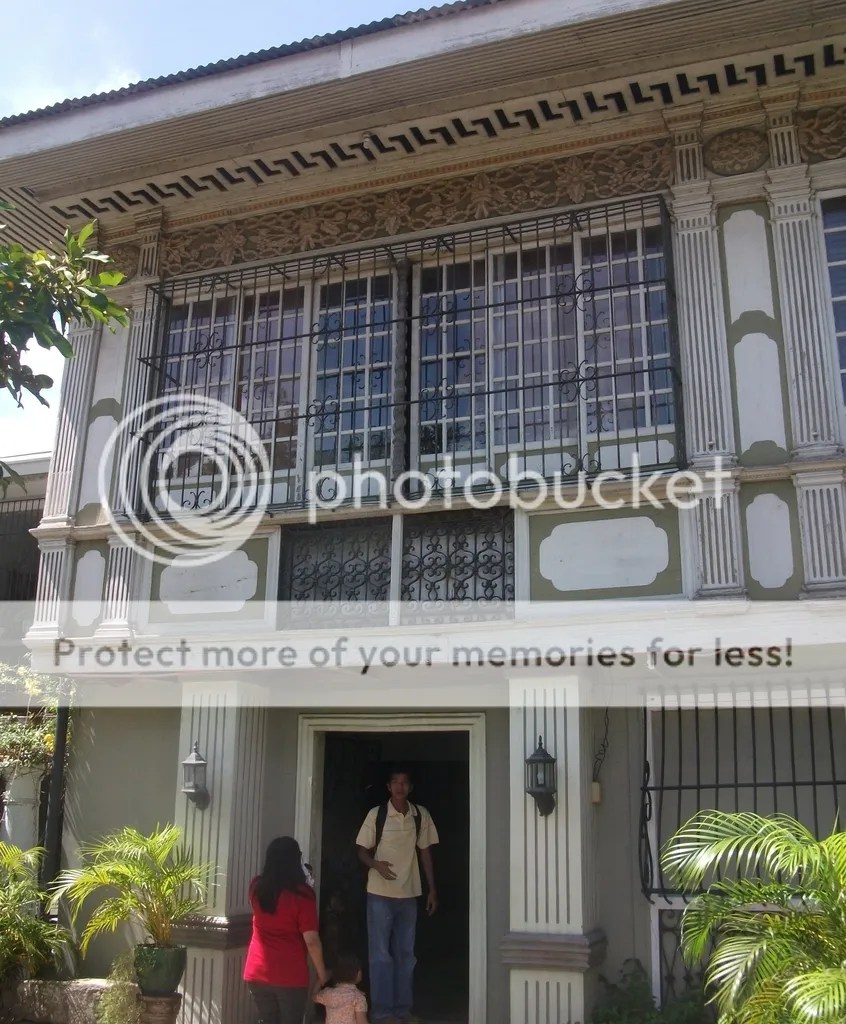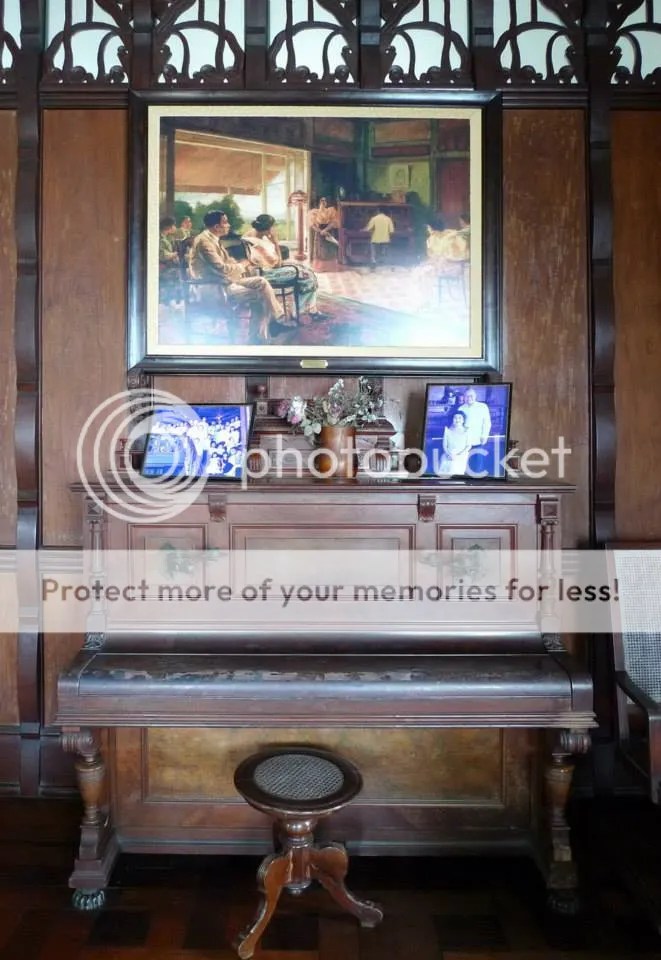Malolos City , Bulacan province -Philippines
Malolos Cathedral also known as Our Lady of the Immaculate Concepcion Minor Basilica
After we toured the Malolos Cityhall, Our next stop was the Malolos Cathedral which is just a few meters away from the Barasoain Church . The church a neoclassical church completed 1817 destroyed by earthquake in 1873, burned in 1899, and was rebuilt 1902-1936. A large Statue of Our Lady of the Immaculate Conception stands out even from afar.
Malolos Cathedral interior
Since it was also the practice of rich dioceses during the Spanish colonial regime to name the church under Immaculate Concepcion. The church is favorite place for weddings, renewal of vows and place for pictorials. The Malolos Cathedral convent served as the presidential palace of Gen. Emilio Aguinaldo y Famy, during the First Philippine Republic from September 15, 1898 to March 31, 1899. Gen. Aguinaldo used the convent as his office.
Siar Tree ( Peltophorum pterocarpum ) is native to tropical southeastern Asia and northern Australia
Within its parking space stood a living century-old tree Freedom Tree ( Kalayaan Tree) which is a living witness to the Spanish revolution. This is locally known as SIAR ,according to the locals living near the cathedral. This tree used to be commonly planted as ornamental shade tree within the plazas and main avenues with its bright yellow-colored flowers.
historical markers
Unfortunately, It also had its disadvantages, Since it is a large tree – It can be uprooted when there is a strong typhoon . The century-old tree was examined by tree specialists few years ago and its health is declining due to the bad practice of leaf burning near its tree trunk and thus it was prohibited .
Filipino statues during the revolutionaries represented by Gen. Gregorio del Pilar , Gen. Isidoro Torres; Don Pablo Tecson, Fr. Mariano Sevilla, & Doña Basilia Tantoco.
We went to the ka-mestizohan district . It was patterned after the old intramuros area where streets are narrow and some of the rich Filipinos ( Chinese , Spaniards , Mexicans mix ) settled.
Pariancillo street
We walked the historic streets of Estrella and Pariancillo . There is the the Ejercito House which was the Department of War of the First Philippine Republic.

On the left side of Pariancillo St. is the Cervantes House which is the Tiongson House with its intricate windows. ( Pariancillo street was named after the famed Parian district of Manila ) This is where Chinese immigrants and localized Filipino-Chinese settled and allowed to trade before they were moved further north of the Pasig river . The early pioneers were the merchant and mestizos from Manila.
Gobierno del Pilar de Malolos building also known as Meralco building
The group also passed by GOBIERNO del Pilar de Plaza de Malolos or called
Adriano House has been beautifully restored and today and serves as the Meralco Building. Unlike other buildings around the area, a visit within the compound requires a written permit since this is a private building . There is a historical marker within the grand staircase in front of the old building.
It was then the Gobierno Militar de la Plaza. Now Just across it is a structure with
sealed half-moon balconies that once served as jail or (carcel ) .

casa tribunal walls with ferns and weeds
CASA TRIBUNAL served as town hall of Malolos in 1859. its now a blank
wall only 4% remains of the structure.
This is the 1914 Paulino and Alberta Uitangcoy-Santos House in Malolos, Bulacan.
our group were extremely privileged to visit the house of the acknowledged leader of
the group, Alberta S. Uitangcoy, “iDING”(1865). It is the home of one of the notable Women of Malolos who started a signature petition for Governor General Valeriano Weyler for women in Malolos to have a school in which they can learn Spanish in 1889.
The lower floor used be a Pharmacy store
the house was burned down and a second house was built, This second home, completed in 1914, is what we get to visit today. Within the grounds of the house, it had an old well.
old well
The house was restored few years ago by Ambassador Bienvenido Tantoco Sr. who’s fore bearers owned the house. Now, the house serves as a venue place, lifestyle museum.
The site also serves as an office for the foundation
The Women of Malolos Foundation Incorporated ( WOMFI )or (Kababaihan ng Malolos) relatives and kins were direct descendants of the original Women of Malolos whom Dr. Jose Rizal wrote letter.
Ms. Rheeza Hernandez briefing the participants
We were served hot pandesal, coffee and home-made ham in our brief stop-over at the house. We toured the rooms and their wonderful array of old clothes , furniture sets ,kitchen sets, commemorative pins and wood works.
Jamon de Bulakenya/ Hamon de Bulakenya
Jamon de Bulakenya / Hamon de Bulakenya – It is made from choice cuts of pork belly ( liempo ) . The use of pineapple juice ( 2 cups) , beer ( 1 cup ) , 1/4 cup wine , 4 tablespoon sugar , 2 tablespoon of salt , 1 tablespoon of prague powder . They used to put salitre ( Sodium nitrate ) as preservatives but it was gradually changed.
The difference between this ham compared to the commercial ones that we have tasted , Is that it is mildly flavored and is quite tender. It might be due to the fact that pineapple juice were used for marinating the ham . (pineapple juice contains enzyme bromelian which tenderized meat ) The beer and the wine also somehow neutralized the taste of the ham. The ham is also available for sale at Bistro Maloleño.
pressed ceilings / hammered iron ceiling is locally called pinukpok , pukpok
Tin -plate ceilings were popularized during the time of Queen Victoria in England. These are mass produced from thin rolled tin-plate – sheets of tin were stamped one at a time using rope drop hammers and cast iron molds.
They were traditionally painted white to create the illusion of hand-carved or molded plaster. Built to withstand the test of time, many colonial era homes still bear witness to the durability of these ceilings, especially in the absence of moisture damage, which lead to corrosion.
I have seen some nice tin works on the Villavicencio house in Taal , Casa Manila in Intramuros ( probably bought from demolished colonial houses from San Nicolas district in Manila) .
a more colorful and elaborate pressed ceiling at the Santos -Bautista home
The simple interiors were made from choice hardwood panels gave way to white colored steel ceiling art work known as ” pinukpok ” or ” pukpok” by hammering sheets of iron to form intricate design patterns. It used to be imported from the United States or Europe in which the plates of iron were installed at the the ceiling of rich aristocrat homes in the late 19th to early 20th century .
wood mold with intricate pattern
When the rising cost of materials and technology led to local people copying the designs and technology of pressing tin , thereby reducing the cost of materials . Hence towards the early 20th century there are more homes which were able to afford these iron ceilings.
Using hardwoods as molding material , locally trained carpenters would hammer out thin sheets of iron . They are still labor intensive to make and according to some seasoned architects and interior stylists . They cannot be bought by ordinary wage earners.
beside the present marker , now stood a modern mansion
Women of Malolos marker – an old house once stood
On the left are the ruins that mark the place where Jose Rizal’s historic letter
To the Women of Malolos was read.
Bautista-Santos House
The Bautista-Santos House is ornately sculpted with neo-classical touches is also known as the Secretaria de Fomento.
gazebo
It had a large garden with makopa trees , gazebo and neatly manicured lawn. According to one of the present owners of the house, the garden can be rented-out for special functions like weddings, pictorials and special events.
tour participants carefully listened to the architectural details of the Don Antonio Bautista house
There is a popular myths that if makopa trees were planted extensively in one’s backyard. There will be high chances that there will be spinster and old gentlemen in the family.
side entrance
Don Antonio Bautista was an aide of Gen. Emilio Aguinaldo.
life-sized statue of Mother Mary dressed in period finery
The house is indeed a treasure trove of old items and family heirlooms such as paintings done by well-known artists , antique vases, life-sized santos ( saints)

There were a lot of furnitures , some of which are centuries-old
dining area
The living room area had a lot of paintings from known artists of that period.
Katipunan flag owned by Gat Andres Bonifacio
There is an old Katipunan flag which is mounted on a wooden frame with shells and mother of pearls that was previously owned by Gat Andres Bonifacio and was kept by his wife Gregoria de Jesus.
The flag was given as a token of gratitude to Mr. Antonio S. Baustista when she visited him on April 28, 1931 .
We then walked and passed several old colonial houses which dates from late 19th century to the late 1950 and 1960’s.
Dr. Luis Santos house
Another very interesting architectural wonder is the house of Dr. Luis Santos – He is one of the prominent personality and he is the son of Alberta Uitangcoy-Santos . The house was probably built around the early 1931 and was finished in 1933 . This was the start of the art deco style of architecture in the country.
marker
Don Luis Santos was an eye specialist who cured Maria Rizal ( sister of Dr. Jose P. Rizal) , Fabian dela Rosa ( artist ) and among prominent families of Malolos.
an area which is converted into a library
The house command a very imposing view of a bygone era which reflects the art deco architecture and with its dark wooden panel interiors speaks of the affluence of the Malolos families of the early 20th century.
Participants of the tour ( field of architecture and interior design ) assume that the owners had used 3 to 5 kinds of hardwood tree species .
bookshelves with an unidentified wooden female sculpture holding a lamp
Since our tour group were composed by architects, landscape professors, plant enthusiasts, heritage advocates , photo enthusiasts, travel , art historians and bloggers. The caretaker carefully noted some of our suggestion.
art deco elements and floral carvings on staircase supporting frame
An apotheosis was painted by National Artist Fernando Amorsolo
The magnificent art works done by Mr. Fernando Amorsolo solicited a lot of amazement from our group. The dark woods highlighted his pastel colored art works.
an old piano , family photos and a Fabian de la Rosa painting
Another master of Philippine painting is proudly displayed at the dining room area . It is entitled “El Kundiman ” 1932 by Maestro Fabian dela Rosa. The painting shows a beautiful maiden in period traje de mestiza dress performing a kundiman song and entertaining visitors .
Fabian de la Rosa (May 5, 1869 – December 14, 1937) is an artists ,uncle and mentor of Fernando Amorsolo .
sanggumay orchid painting
When the caretakers of the house opened the lights, it further illuminates the beauty of the paintings. It took us a while to marvel and gaze .
Some of the participants also marveled at the intricate art deco grill works and stained glass windows.

peacock design steel works adorn the doors
Dr. Luis Santos bust and wooden sala chair
Some of the items we saw inside the house were given as gifts or tokens to the family by their friends and patients .

Santo Entierro – Dead Christ covered by purple cloth
In one of the rooms inside the house, There is a place with a bed and a life-sized body of Santo Entierro which is covered in purple cloth .
The usual highlight of Good Friday is the Santo Entierro (“holy interment”), which is the name of both the rite and the wooden sculpture of the dead Christ lying supine used in the ritual.
fountain sculpture in the garden was done by National Artist Guillermo Tolentino
a pocket garden with ground orchids, pinsarai , miyagos and large taklobo as an added accent
The garden boast of several fruit trees like kamias, mangoes , santol , guavas among others. Flowering plants included , ground orchids, portulaca ( Vietnam rose) and a couple of native orchid species like Dendrobium anosmum ( sanggumay) and Dendrobium crumenatum ( dove orchid )
private altar where Our Lady of Lourdes is dedicated
Our group also marveled at the wood ceiling with floral and art deco elements .


The house is not open to the public and we have to pre-arrange our visit days and even weeks in advance. We were supposed to meet the descendants of Dr. Luis Santos during our visit .
Unfortunately , the meeting was called off in the last minutes due to conflicting schedule .


I usually refer this dessert as a type of pudding , but some would compare this as a mixture of leche flan , creme brulee or leite creme by the Portuguese.

Others would say that egg yolks which were byproducts of construction during the Spanish era were made into different kinds of delicacies . Egg white is normally added as a binding agent together with lime and sand.










References:
Hand-outs and leaflets provided by the Bulacan Tourism office .
Ocampo , Maria B. Kalayaan tree: a living witness to Aguinaldo presidency, June 4, 1993
Enriquez, Milagros – Santiago : Kasaysayan ng Kaluto ng Bayan, (Zita Publishing Corp., 1993)
Agoncillo, Teodoro. History of the Filipino People. Garotech Publishing, Quezon City. 1990.
Lansigan, Nicolas P. Living Links with our Past. Herald Printing Services, Mandaluyong, Metro Manila. 1983.
Filed under: Food, Heritage, people, Place | Tagged: Art Deco, Bistro Maloleno, Bulacan, Bulacan Ham, Bulakan, Casa Tribunal, Crispy Pata Kare-Kare, Dr. Luis Santos house, Food, Freedom tree, Guillermo Tolentino, Hamon de Bulakenya, Heritage, jacobina, Jamon de Bulakenya, Kalayaan Tree, liempo, Maestro Fabian de la Rosa, Malolos, Mr. Freddie Talbenito, Mrs. Milagros Enriquez, Pariancillo, Peltophorum pterocarpum, people, Pinaso, pinukpok, Place, Pochero ala Marcelo H. del Pilar, pork belly, pukpok, Queen Victoria, Santo Entierro, Travel | 3 Comments »












































 ornamental pineapple
ornamental pineapple  Manila Cathedral with pineapple design
Manila Cathedral with pineapple design  ladies fashion made from knitted pineapple fabrics
ladies fashion made from knitted pineapple fabrics 
 Nooks Co. Ltd exhibit booth during the 50th Manila F.A.M.E.
Nooks Co. Ltd exhibit booth during the 50th Manila F.A.M.E.

